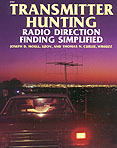KØOV's Photo Album
of the 2009 USA and IARU-R2 ARDF Championships
Page 2 of 5
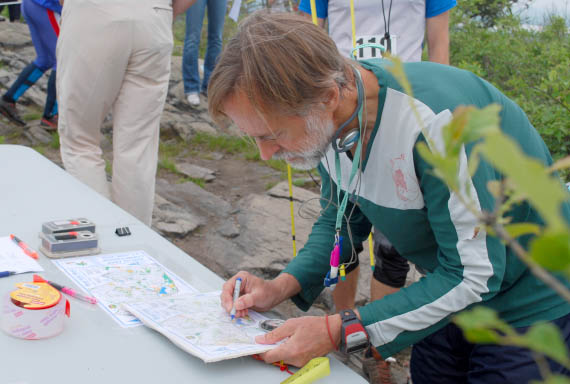
Bob Cooley KF6VSE prepares his map for the two-meter hunt.
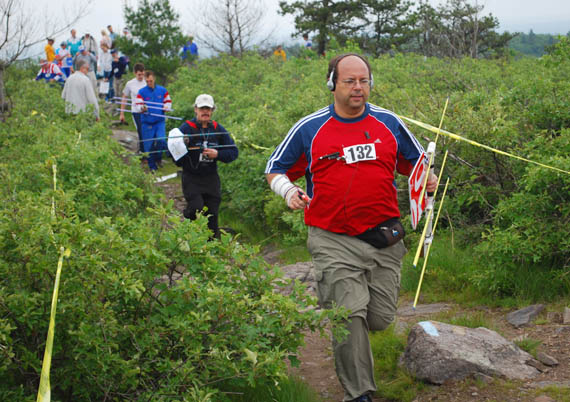
Groups of up to four competitors were started at the same time, coincident with the beginning of Fox #1 transmissions. Persons in each starting group were in separate age/gender categories. In this group, Matthew Robbins AA9YH was followed by Greg Burakovskiy. Behind the starting line, Vadim Afonkin KB1RLI checks an ARDF set.
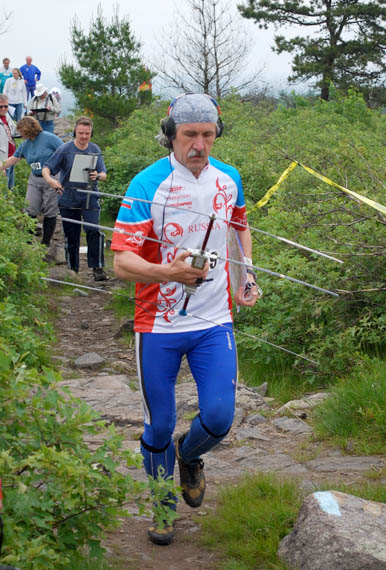
There was only one electronic recording (e-punch) station at the start, so starters had to "punch" one at a time after they were given the start signal. It wasn't a disadvantage to anyone because the scoring system computed everyone's exact elapsed time from start to finish. Igor Kekin punched first in this group, followed by Leszek Lechowicz NI1L. Jen Harker W5JEN is at the e-punch station.
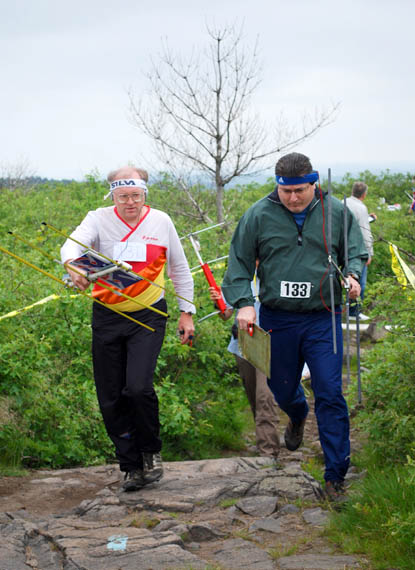
In the 2-meter start corridor are Guy Olsen (left) in his first ARDF championships, being passed by Csaba Tiszttarto, who has been a member of ARDF Team USA.
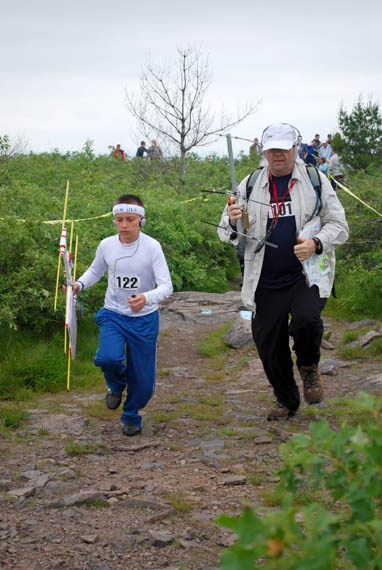
Eleven-year-old Addison Bosley was the youngest competitor at these championships. He had just completed sixth grade as an honor student in Erlanger, Kentucky. Alongside him in the corridor is long-timer Bill Smathers KG6HXX.
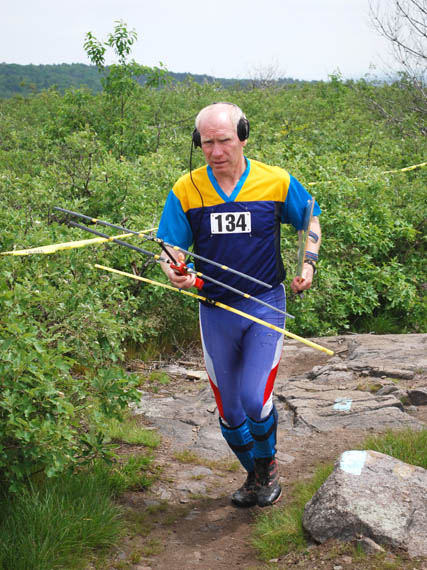
Nikolay Ivanchihin UR8UA could have competed in the four-fox M50 category. Instead, he went up against radio-orienteers in their 20s and 30s in the five-fox M21 category. In this two-meter event, he easily won gold with a time that was almost 28 minutes faster than second place.
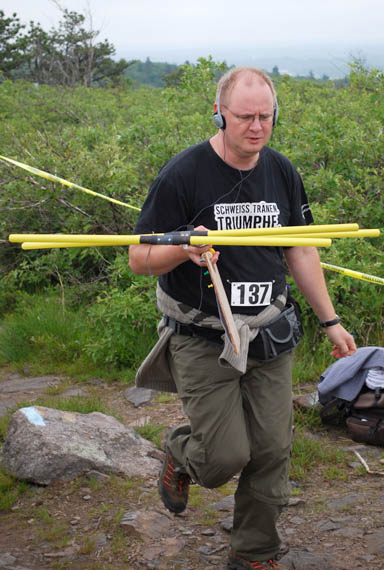
Herald Dettling DC1GB sets out on his quest to find the two-meter transmitters.
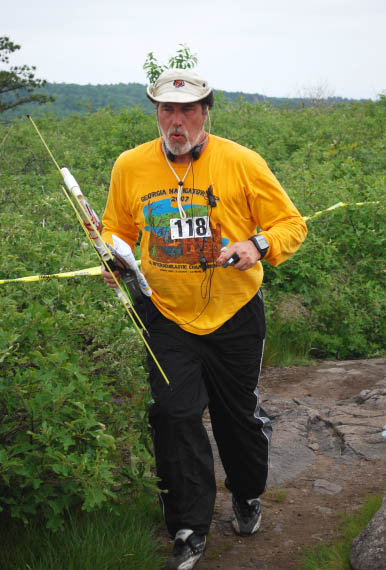
Brian DeYoung K4BRI in the two-meter starting corridor. He provided some of the transmitters, but didn't know where Vadim placed them until he found them.
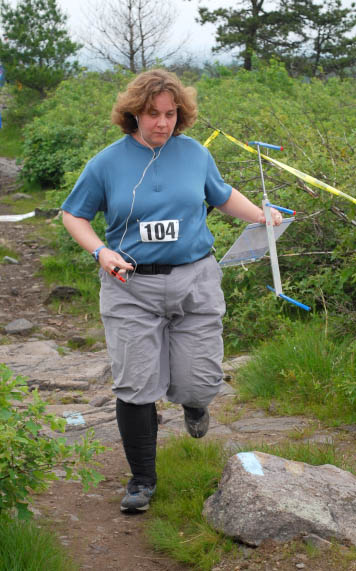
Jen Harker W5JEN carefully avoided tripping in the corridor.
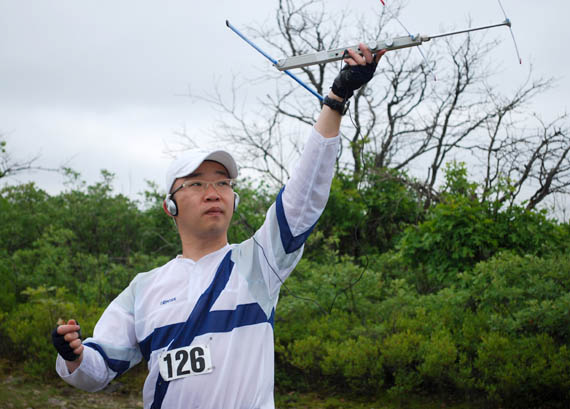
Because it was a high location where bearings were less subject to reflections, many competitors stopped at the end of the two-meter starting corridor to get fixes on all the foxes before descending into the woods. Kentaro Kurogi holds his antenna over his head to maximize the signal strength.
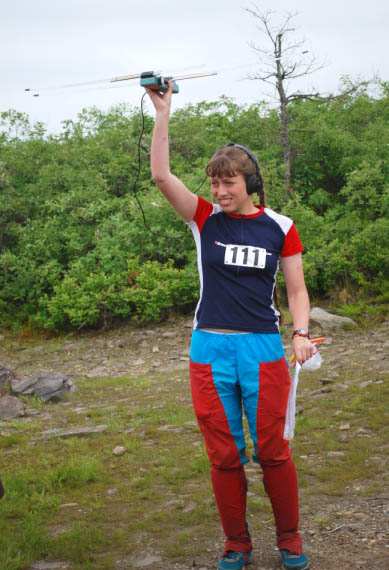
Lori Huberman is an experienced orienteer but is new to ARDF, having learned it from Vadim in the New England Orienteering Club.
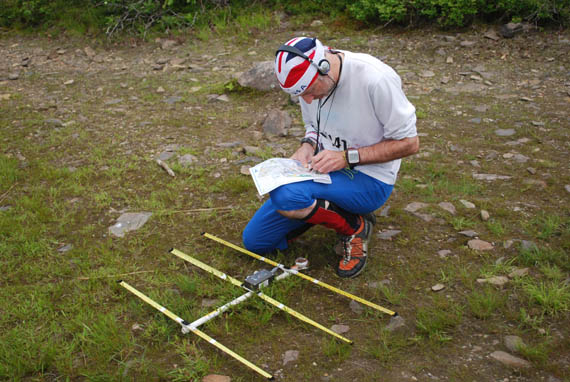
David Williams M3WDD was one of several competitors who wore GPS trackers on their wrists. Such devices don't help with navigation, but they record the exact route for later analysis.
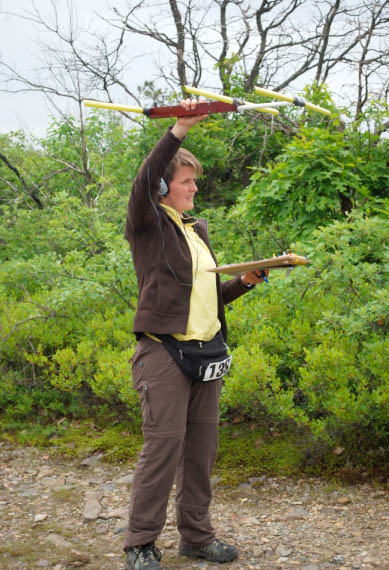
This was the first ARDF trip to the USA for Susanne Walz DG4SFF of Germany.
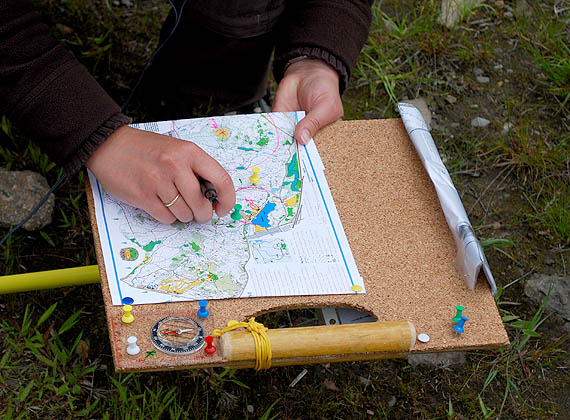
A close-up of Susanne's map board.
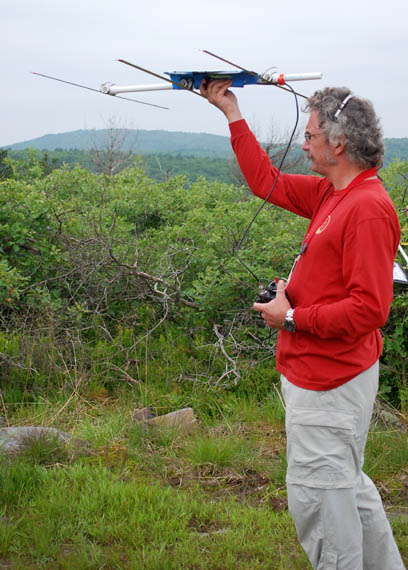
Bill Noyce AB1AV fastened his map board to the boom of his antenna.
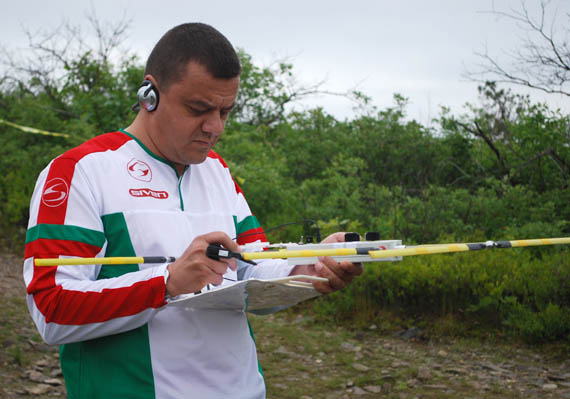
Valeri Georgiev of Montreal, Canada learned ARDF in his native Bulgaria. This was his second championships since his move to North America.
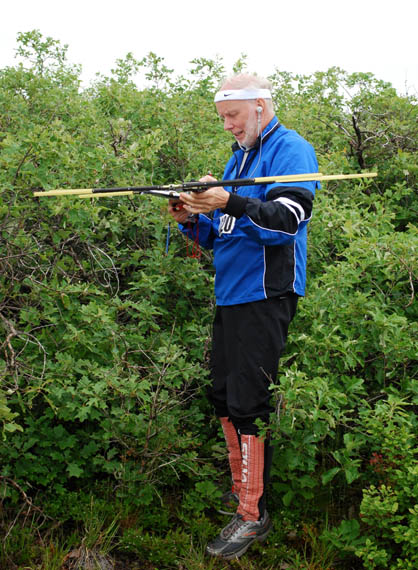
Veteran radio-orienteer Per-Axel Nordwaeger SMØBGU was course-setter for the 1994 ARDF World Championships in Sweden. Even though he is now over 70 years of age, he continues to be a regular competitor. In this first trip for him to the USA for ARDF, he went up against competitors in their early 60s and took home two silver medals.
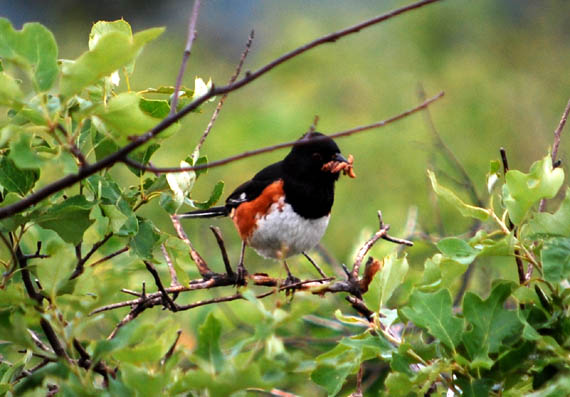
Blue Hills Reservation has abundant wildlife, such as this Eastern Towhee that perched patiently by the starting corridor. He wants me to leave before he takes these bugs to his hatchlings, because he doesn't want me to know the location of his nest.
